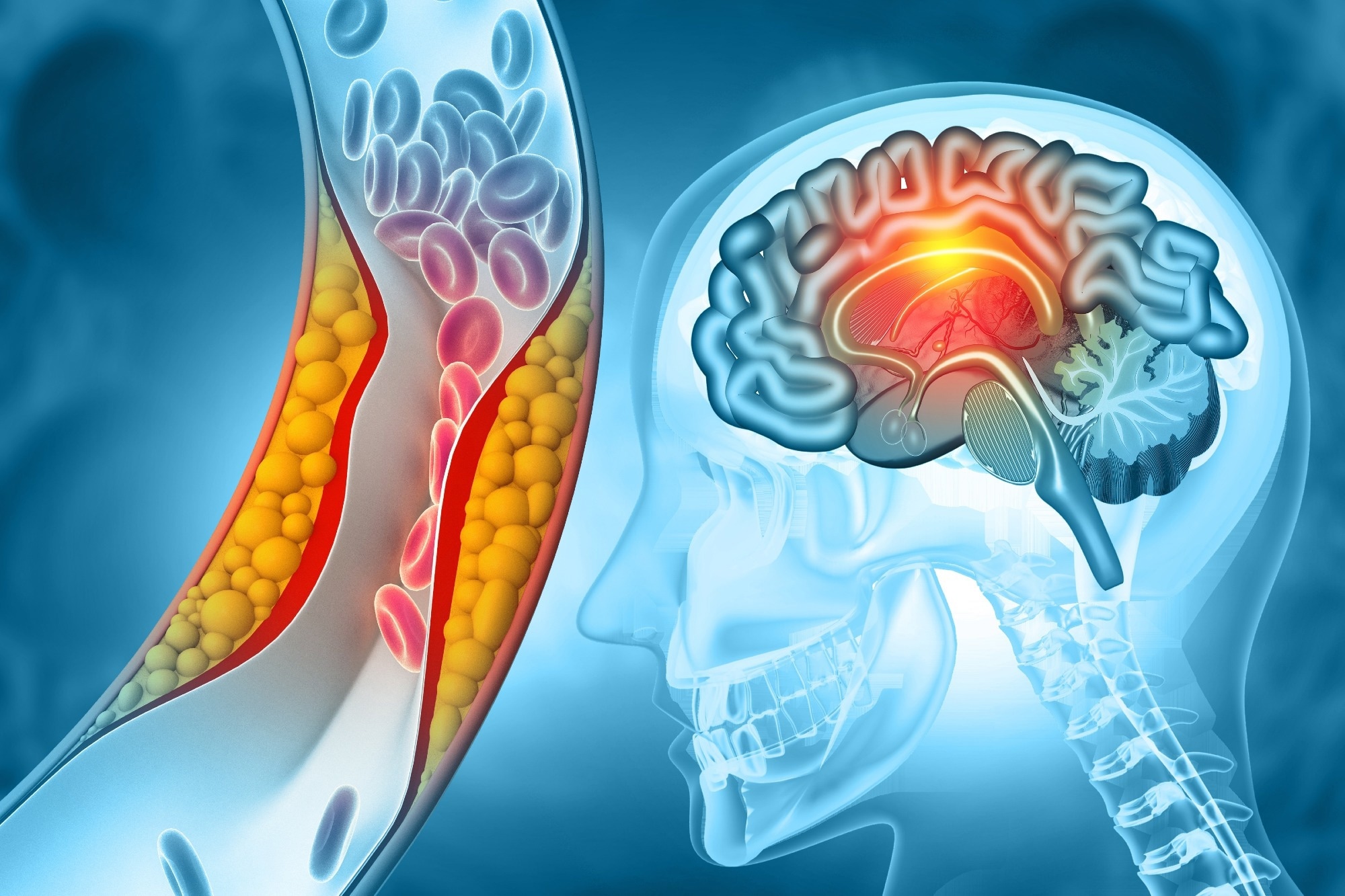A novel study reveals that targeting a single protein’s aggregation can dramatically reduce brain injury after stroke, potentially transforming how acute ischemic strokes are treated.
Study: Inhibition of GAPDH aggregation as a potential treatment for acute ischemic stroke. Image Credit: crystal light / Shutterstock
A recent study published in the journal iScience reported that inhibiting the aggregation of glyceraldehyde-3-phosphate dehydrogenase (GAPDH) could be a therapeutic target for acute ischemic stroke (AIS).
Stroke is the second leading cause of death. Recombinant tissue plasminogen activator is among the most effective treatments for AIS but has limited acceptability and a narrow therapeutic window (within 4.5 hours). Other medications are symptomatic treatments and have short therapeutic time windows. As such, novel therapeutic approaches are needed to explore alternative therapies.
Evidence suggests that ischemia-reperfusion injury plays a role in AIS pathogenesis. The brain undergoes robust nitrosative/oxidative stress during ischemia-reperfusion, resulting in neuronal death. Understanding the damage induced by stress could illuminate the underlying mechanisms and help identify potential treatments for AIS.
GAPDH is a multifunctional protein that exhibits various functions, including DNA repair, kinase regulation, heme metabolism, and regulation of necrosis and apoptosis. Under oxidative/nitrosative stress, GAPDH nuclear translocation occurs with low-to-moderate stress (causing apoptosis), while aggregation occurs with severe stress (causing necrosis).
The study and findings
In the present study, researchers assessed whether GAPDH aggregation induced by ischemia-reperfusion is involved in the pathogenesis of AIS. First, a mouse AIS model was created by transient middle cerebral artery occlusion (MCAO). Animals were subjected to ischemia for 30 minutes and reperfusion for varying durations. Brain infarction was evident 24 hours post-reperfusion, with infarct volume increasing with time. GAPDH aggregates were detected in the striatum (ischemic core) 12 hours post-reperfusion, preceding infarction.
The team generated conditional transgenic mice with neuron-specific expression of GAPDH-C152A to test whether neuronal damage could be prevented by inhibiting the aggregation. To this end, they used a human GAPDH-C152A construct (which reduces GAPDH aggregation in a dominant-negative manner) and doxycycline for temporal control of its expression.
GAPDH-C152A was expressed in the absence of Dox but not in its presence. Further, transgenic and non-transgenic mice were treated with Dox or vehicle for 14 days before MCAO. Physiological parameters (blood pressure, blood gases, cerebral blood flow) remained unaffected.
The infarct volume was the same in all non-transgenic mice, irrespective of Dox treatment. By contrast, Dox-untreated transgenic mice had significantly smaller infarct volumes in both cortex and striatum than Dox-treated counterparts. Moreover, the neurological score, a unilateral paralysis index, was significantly improved in Dox-untreated transgenic mice, suggesting that GAPDH-C152 expression ameliorated brain damage.
The researchers previously reported that GAPDH aggregates induced mitochondrial dysfunction and cell death in vitro. As such, mitochondrial dysfunction was assessed based on the release of cell death mediators: apoptosis-inducing factor (AIF) and cytochrome c (Cyt c), which enter the nucleus and cytosol, respectively. Both nuclear AIF and cytosolic Cyt c levels were significantly lower in Dox-untreated transgenic mice than in Dox-treated transgenic mice.
Further, the team evaluated whether brain damage could be prevented through pharmacological inhibition of GAPDH aggregation. To this end, peptides with varying types and numbers of amino acids were designed and tested for their inhibitory potential. The SCT (serine-cysteine-threonine) tripeptide (GAI-17, IC50 = 1.18 μM) was identified as the most potent inhibitor, without adverse effects on cell viability or GAPDH enzymatic activity. Its therapeutic effects were subsequently assessed in the MCAO model.
Mice were intracerebroventricularly (i.c.v.) injected with 30 nmol or 60 nmol GAI-17 1 hour before, immediately after, and 12 hours after reperfusion. GAI-17 pretreatment significantly reduced infarct volumes in a dose-dependent fashion. The high-dose treatment resulted in a significant decrease in infarct volumes, specifically in the cortex (penumbra) but not in the striatum (ischemic core). GAI-17 is explicitly localized to neurons after i.c.v. administration. Treatment with 60 nmol GAI-17 did not affect physiological parameters. In addition, nuclear AIF and cytosolic Cyt c levels were significantly reduced in the cortex by 60 nmol GAI-17.
Finally, the team sought to ascertain the therapeutic time window. To this end, GAI-17 was administered at two time points: 3 hours and 12 hours (post-3h group), 6 hours and 12 hours (post-6h group), or 9 hours and 12 hours (post-9h group) post-reperfusion. The infarct volume was significantly reduced in the cortex in the post-3h and post-6h groups. Neurological deficits were improved considerably by GAI-17 treatment in the post-3h and post-6h groups. However, the post-9h group lacked protective effects, establishing a therapeutic window up to 6 hours post-reperfusion.
Study Limitations
The research had key limitations: (1) Only transient ischemia (with reperfusion) was modeled, not permanent stroke; (2) Effects were only assessed acutely (≤48h), not in subacute/chronic phases; (3) Potential off-target effects of GAI-17 remain unexplored; and (4) While females showed reduced susceptibility to damage, sex differences weren’t fully investigated.
Conclusions
The study demonstrated that GAPDH aggregates form prior to the onset of brain infarction following ischemia-reperfusion in a mouse AIS model. The findings suggest GAPDH aggregation as a likely causal mechanism for neuronal death in AIS.
Decreasing GAPDH aggregation via genetic (C152A-GAPDH expression) or pharmacological (GAI-17) approaches alleviated mitochondrial dysfunction and ameliorated neurological deficits and brain damage primarily in the cortical penumbra.
Together, the findings suggest that inhibiting GAPDH aggregation could be a therapeutic target for AIS, offering an extended treatment window compared to current options.
